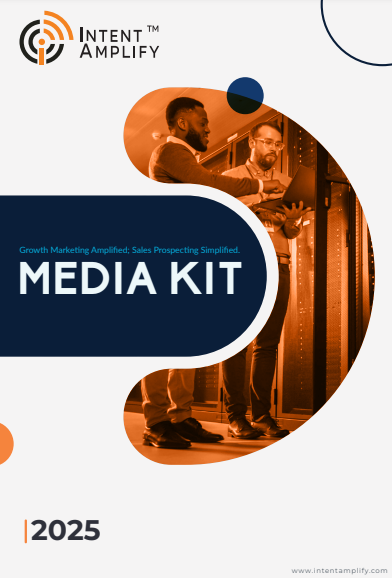
Comparing Inbound vs. Outbound Marketing ROI for B2B Growth in 2025
- Last updated on: July 2, 2025
Marketing leaders in today’s world of 2025 B2B face immense pressure to generate measurable returns. Every dollar matters and is meant to yield concrete business outcomes. While both inbound and outbound marketing have witnessed a boost with AI-backed developments, automation, and insights into buying behavior, the underlying question remains the same: Which one yields better ROI for B2B growth?
This article provides a real-world, data-driven comparison of inbound and outbound marketing, gauging effectiveness, efficiency, and scalability. For B2B teams looking to shift their strategy, this handbook lays out what works best and when.
Understanding the Inbound Advantage: Long-Term Value at Lower Cost
Inbound marketing has overtaken B2B since it’s inexpensive and produces compounding returns. By creating useful content, search engine optimized assets, and personalized journeys, businesses attract existing leads who are already searching for solutions.
Several 2025 reports indicate that inbound leads are 62% more affordable, on average, than outbound leads. But cost does not necessarily dictate value. What makes inbound so strong today is that it aligns with how modern B2B buyers research and evaluate.
Key Advantages of Inbound Marketing in 2025
- Enhanced Buyer Alignment: B2B buyers increasingly prefer to research on their terms. Inbound content like whitepapers, webinars, and comparison tools welcomes them where they are, without disruption.
- Higher Engagement Levels: Organic leads who come across your content engage deeper. These prospects have better intent and longer lifetimes.
- Scalable with Lower Overhead: When produced, content continues to drive traffic with minimal investment. SEO through AI now allows for inbound tactics to scale across channels with greater precision.
It’s not an inbound marketing content play for 2025. It’s a data-driven machine powered by behavioral analytics, responsive landing pages, and zero-click intent tracking. Companies that invest in inbound experience consistently have higher lead quality and ROI, especially when paired with ABM tactics.
Outbound Marketing in 2025: Data-Driven Precision
Outbound marketing has evolved a lot. Cold calls and mailouts are no longer a thing. In 2025, outbound campaigns are driven by real-time intent data, contact profile-enriched data, and AI-sequenced follow-ups. What results from it? More targeted outreach and faster conversion cycles.
Advantages of Modern Outbound Marketing
- Quicker Pipeline Velocity: Outbound helps marketing teams directly influence pipeline for time-sensitive B2B campaigns by focusing on accounts that are within their ICP (Ideal Customer Profile).
- Hyper-Personalization: Next-generation outbound tools support dynamic message creation by buying stage, role, and even recent actions. This boosts open and response rates significantly.
- Enhanced Multi-Channel Orchestration: Tools now enable outbound delivery through email, LinkedIn, programmatic display, and even voice drops—delivering better reach across decision-maker sets.
Outbound activities, driven by strong data signals, continue to offer unmatched velocity to the high-value accounts. However, outbound strategies have higher costs per lead and require ongoing investment in platform fees, sales development activity, and compliance tracking.
Direct ROI Comparison: Which Delivers Better Returns in 2025
In evaluating inbound vs. outbound marketing, the ROI discussion cannot be on cost-per-lead alone. 2025 ROI must reflect the entire revenue impact deal size, conversion timeframe, lead quality, and retention. Inbound marketing will pay off in the long term. These leads tend to be closer to decision-making in the buyer’s process and are therefore more likely to be converted.
On the other hand, outbound campaigns yield faster pipeline acceleration. For new market expansions, product launches, or quota deadlines, outbound approaches yield immediate access. Such a higher return, however, usually requires more investment in SDR teams, tech stacks, and data enrichment providers.
Lastly, ROI depends on campaign maturity, buyer signal utilization, and sales-marketing alignment. Inbound increases profitably over time, whereas outbound performs well in focused, high-velocity use cases. Businesses that track returns outside lead volume, such as contribution to closed revenue, have clearer insight into which approach is delivering more value for specific goals.
When to Use Inbound, When to Use Outbound
The choice isn’t between inbound and outbound. It’s understanding when to use each depending on the stage of your audience’s lifecycle and business objectives. Inbound plays best when trying to cultivate consideration, inform the market, or create brand awareness among self-directed buyers. These tactics are particularly well-suited to long-cycle solutions such as SaaS platforms, infrastructure software, or business services.
Outbound must be the priority when sales objectives require direct engagement with high-intent accounts or when you are exploring new verticals where brand fame is not widespread. As an example, if your B2B solution addresses a specialized security issue, outbound activity can ensure you are not dependent on organic discovery. You drive prospecting and accelerate buyer conversations.
Another key factor is deal complexity. High-value deals often demand human touchpoints. Outbound provides the flexibility to introduce custom offers, schedule demos, or initiate executive conversations. But for lower-touch conversions like product-led growth or free trials, inbound can do the heavy lifting with minimal sales involvement. Choosing the right strategy depends on knowing your audience’s buying behavior and your company’s readiness to execute consistently.
Combining Both for Maximum Impact
2025 determined that the best B2B companies don’t choose between inbound and outbound, they do both together. Merging the strengths of each, businesses can fuel top-funnel visibility with targeted strategic account focus. The combined solution, often known as integrated demand generation, has the highest potential for long-term ROI.
For example, inbound pieces like industry studies and whitepapers can fuel outbound sequences. Referencing a webinar or blog in a cold email increases relevance and interest. Similarly, inbound traffic data can be used to trigger outbound follow-up through remarketing or SDR outreach. This feedback loop maximizes messaging, targeting, and results.
Marketing automation systems today enable seamless orchestration across both motion types. AI capabilities separate audiences, tailor communications, and align campaign performance metrics in real time. By building a single framework wherein inbound nurtures and outbound activates, marketing teams bridge influence throughout the entire buyer journey. The combined approach reduces waste in spending and increases sales-qualified opportunities.
Why Intent Data Is the Missing Link?
One of the biggest 2025 differentiators is how companies are utilizing buyer intent data to enhance inbound and outbound outcomes. Intent data shows where prospects are actively researching solutions, what content they are reading, and where they are in the process. It bridges the gap between visibility and timing.
For inbound marketing, intent signals allow for personalization of content and keyword optimization in alignment with real-time demand. For outbound, these signals enhance account targeting and message relevance to those actively exploring comparable solutions. This context eliminates guessing and increases timing, which directly impacts ROI. Forrester‘s 2025 B2B study found that B2B businesses using intent data have 36% improved conversion rates from outbound campaigns and 29% lower acquisition costs for inbound.
A lead to the right signals at the right time transforms good campaigns into strategic drivers of growth. Focusing on buyer intent, B2B marketers can spend smarter, reach sooner, and convert more profoundly.
Ready to Power Smarter B2B Campaigns? Try Intent Amplify
Whether you’re scaling your inbound content engine or increasing outbound outreach, the secret to improved ROI lies in actionable data. Intent Amplify provides B2B marketers with the ability to build high-impact campaigns fueled by buyer signals, account insight, and conversion content.
Our platform is designed for sales and marketing teams who are technology savvy and want to automate outreach, prevent lead waste, and accelerate the buyer’s journey. With real-time intent data, advanced analytics, and tailored ABM tools, you have the visibility and freedom to turn marketing investments into responsible growth.
Whether your current campaigns are failing to reach their full potential or you want to scale, Intent Amplify offers the tech and insights to surpass traditional methods. Learn about our solutions to see how data-driven strategies trump speculation in 2025.
FAQs
1. Is the inbound or outbound method more cost-effective in 2025?
Inbound is less expensive for long-term growth. It requires investment upfront in content and SEO, but once up and running, it keeps producing leads at a lower cost than outbound methods.
2. Is outbound marketing effective for B2B anymore in 2025?
Yes, especially when fueled by intent data. New outbound is highly targeted and channel-optimized. Outbound is ideal for high-dollar deals and speed-turn campaigns.
3. How do you measure the actual ROI of both methods?
Track beyond the count of leads. Find out the contribution to the pipeline, speed of deals, average deal size, and customer retention. Apply attribution models for the multitouch influence from the sources of inbound and outbound channels
4. What is the ideal split of inbound to outbound in a B2B strategy?
There is no one-to-one ratio. The majority of successful B2B teams in 2025 will allocate 60% for inbound to build awareness and education, and 40% for outbound to activate and target high-value accounts.
5. How can Intent Amplify empower my marketing team?
Intent Amplify equips your team with real-time buyer signals, high-quality leads, and alignment between sales and marketing tools. With our data-first approach, your strategy will adaptively adjust to market fluctuations and buyer behavior.




